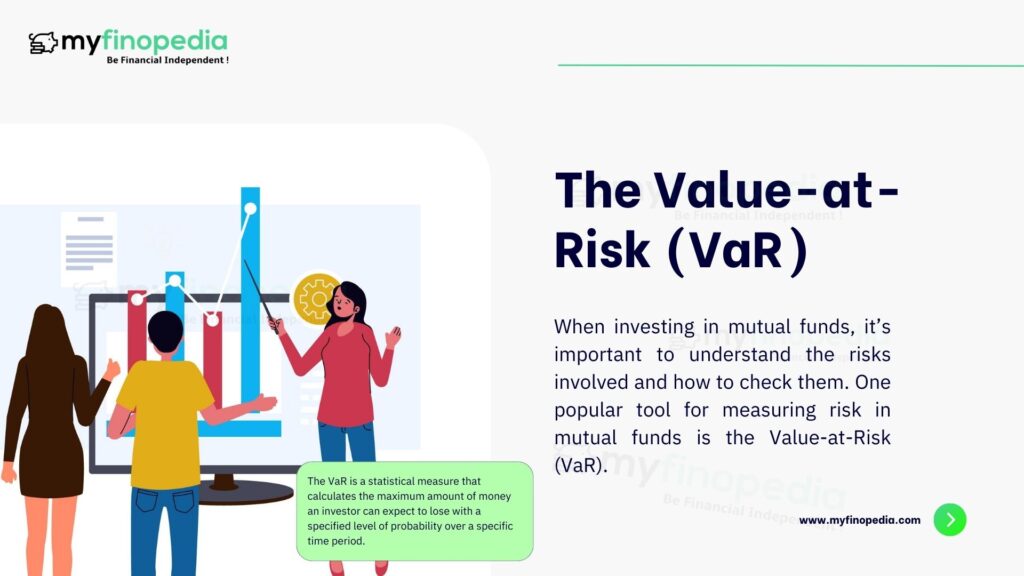When investing in mutual funds, it’s important to understand the risks involved and how to check them. One popular tool for measuring risk in mutual funds is the Value-at-Risk (VaR).
The VaR is a statistical measure that calculates the maximum amount of money an investor can expect to lose with a specified level of probability over a specific time period. To calculate the VaR, the mutual fund’s historical returns are analyzed over a specific period, usually three to five years, and then sorted from highest to lowest.
The VaR is then determined by calculating the amount of money an investor can expect to lose with a certain level of probability, such as 95%, over the specified time period. For example, if a mutual fund has a VaR of 10% with a confidence level of 95% over a one-year period, there is a 95% chance that an investor will not lose more than 10% of their investment over the next year.
Investors who are risk-averse may prefer mutual funds with lower VaRs, as they provide a greater level of downside protection. However, mutual funds with higher VaRs may be more suitable for investors who are comfortable with taking on higher levels of risk in exchange for potentially higher returns.
It’s important to note that the VaR is based on historical data, and past performance may not necessarily predict future results. Therefore, it’s essential to consider other factors, such as the types of securities held by the mutual fund, the fund’s expense ratio, and the fund’s performance relative to its benchmark, before making any investment decisions.
Another important factor to consider when using the VaR to measure risk is the time horizon. The VaR is typically calculated over a specific time period, such as one year. However, if an investor has a longer time horizon, such as five or ten years, the VaR may not provide an accurate measure of risk over that time period. In such cases, other measures, such as the Expected Shortfall (ES), may be more appropriate.
In conclusion, the VaR is a useful tool for measuring risk in mutual funds. It provides investors with an estimate of the maximum amount of money they can expect to lose with a specified level of probability over a specific time period. However, investors should not rely solely on the VaR when making investment decisions. It’s important to consider other factors, such as the types of securities held by the mutual fund and the fund’s performance relative to its benchmark, before making any investment decisions.






